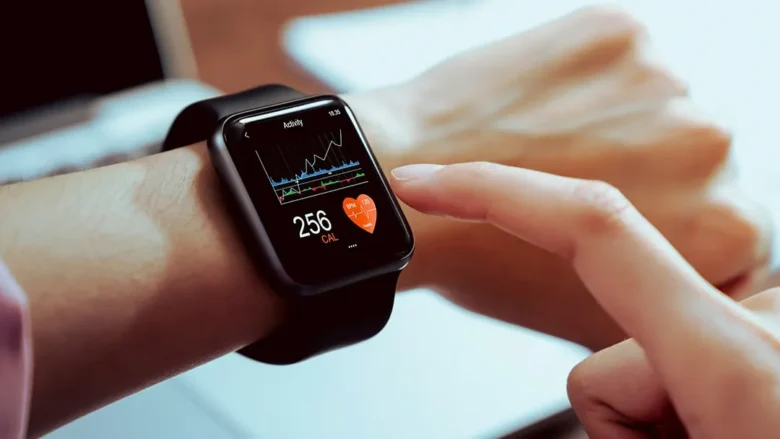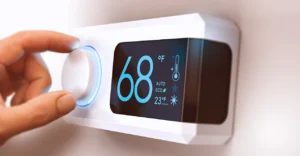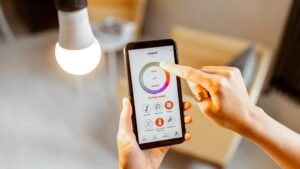Smartwatches can be powerful tools for monitoring health, wellness, and fitness metrics—providing valuable data to healthcare providers as well. Some models display your VO2 max estimate, providing an understanding of cardiorespiratory fitness and how your body recovers after intense physical exercise. Other models help track sleep patterns, while some even detect Afib, an irregular heart rhythm that could potentially become life-threatening if left undiagnosed.
1. Tracking
As technology develops, more people are turning to smartwatches as electronic health monitors to track their health. These devices can detect changes in essential indicators like heart rate and blood pressure to help medical professionals gain a clearer picture of a patient’s condition.
However, we must carefully evaluate these devices for accuracy. A study in 2022 indicated that smartwatches overestimated BP up to 140 mmHg while underestimating it at lower BP levels, showing some level of bias. Therefore, we recommend further verifying any data derived by this technology through metrological methods before relying on them as diagnostic sources.
2. Notifications
Wearable devices for health and fitness purposes can be useful tools; however, there are multiple aspects to keep in mind when assessing smartwatches for potential usefulness. Example: the device can notify patients when they have not met their target step goal, motivating them to walk more. Furthermore, this alert encourages patients to heed movement reminders and stand for short amounts of time, ultimately improving overall well-being.
This device can also detect elevated heart rates and respiratory infections by analyzing the difference between an individual’s resting heart rate and steps taken over time.
3. Convenience
Consumer smartwatches feature various health-related capabilities, such as tracking heart rate and detecting sleep apnea. This technology enhances patients’ comprehension of their symptoms and conditions, securely transmitting them to medical professionals for treatment purposes.
Key considerations when applying smartwatches in healthcare include validating and integrating them into clinical workflows, such as validation and reliability; data privacy, ownership, and security; reimbursement; as well as technical integration into workflows.
4. Accuracy
Use of smartwatches to remotely monitor health metrics is one way to enhance patient care; however, accuracy must always be considered when making such decisions. Recent research demonstrates that consumer-grade smartwatches possess moderate accuracy for estimating energy expenditure (EE) and heart rate during outdoor walking and running, but their precision decreases during peak exercise sessions.
Another study tested whether smartwatches could better capture movement subtleties than clinical documentation or human vision, such as hand-tremor amplitude and frequency. Their reliability was limited due to poor calibration and error assessment processes; furthermore, they also displayed bias when measuring blood pressure (BP).
5. Battery life
Constantly monitoring physiological signals consumes significant battery power. This is particularly true for tracking heart rate and GPS on-the-go (such as during a run).
Studies have also highlighted how smartwatches struggle to accurately and precisely detect medical symptoms, as evidenced by Varghese’s study showing smartphones detecting Parkinson’s tremor signs with equal frequency as seismometers. Many smartwatches feature software optimizations to maximize battery life. Learn how to optimize your watch’s settings here.
6. Design
Smartwatches with optical heart rate sensors that use light to illuminate the skin to measure pulse can give highly accurate readings, provided your watch or band fits snugly; any gaps can impede sensor readings and lead to inaccurate readings. For optimal results, ensure there’s a small gap between the watch/band and body to minimize interference from external factors and get accurate readings.
Smartwatches hold tremendous promise to revolutionize healthcare by encouraging patient engagement and increasing adherence to treatment regimens. Yet integrating smartwatch technology into medical curricula poses its own set of unique challenges, including seamless integration and data management efficiency, and in most instances, these watches should not be relied upon to diagnose illnesses.
7. Connectivity
Studies have revealed that smartwatches can provide vital signals of individual health changes, alerting medical professionals of any potential symptoms and providing them with the opportunity to take necessary precautions in ensuring patient safety.
One study reported that smartwatches equipped with heart rate monitors can accurately detect changes in blood pressure and pulse rate and relay that information to users’ smartphones for analysis, providing medical students and doctors with more effective insight into patients’ conditions, speeding diagnosis and treatment processes, and leading to improved medical outcomes.
8. Tracking
Smartwatches may provide many tracking functions, yet often struggle to provide reliable or accurate data. Most devices can accurately estimate calorie burn and track steps accurately while performing poorly in terms of estimating heart rate variability or VO2 max estimation.
Studies have demonstrated that smartwatches are effective at detecting subtle tremors associated with Parkinson’s disease, yet have proven less successful at detecting actual falls. Furthermore, some models tend to overestimate EE during outdoor walking and running activities. Smartwatches may cause electromagnetic interference with cardiac implantable electronic devices (CIED), such as pacemakers and defibrillators, leading to false positives or disrupting their proper operation. Such interference could even cause false alarms.
9. Convenience
Many smart wearables include heart rate monitors that use photoplethysmography to accurately track blood flow. To get accurate readings, it is crucial that the watch or band fit snugly around your wrist; any gaps could give rise to inaccurate readings. One study tracked hypertensive participants for three months using smartwatches to monitor their BP and DBP, showing marked improvement while their systolic BP remained the same. Daytime smartwatch BP measurements overestimated up to 140 mmHg while underestimating higher levels.
Smartwatches hold enormous promise for healthcare by tracking, nudging, and predicting health outcomes. They allow physicians, nurses, and patients to spend more time providing hands-on care while cutting costs with remote patient monitoring capabilities.




